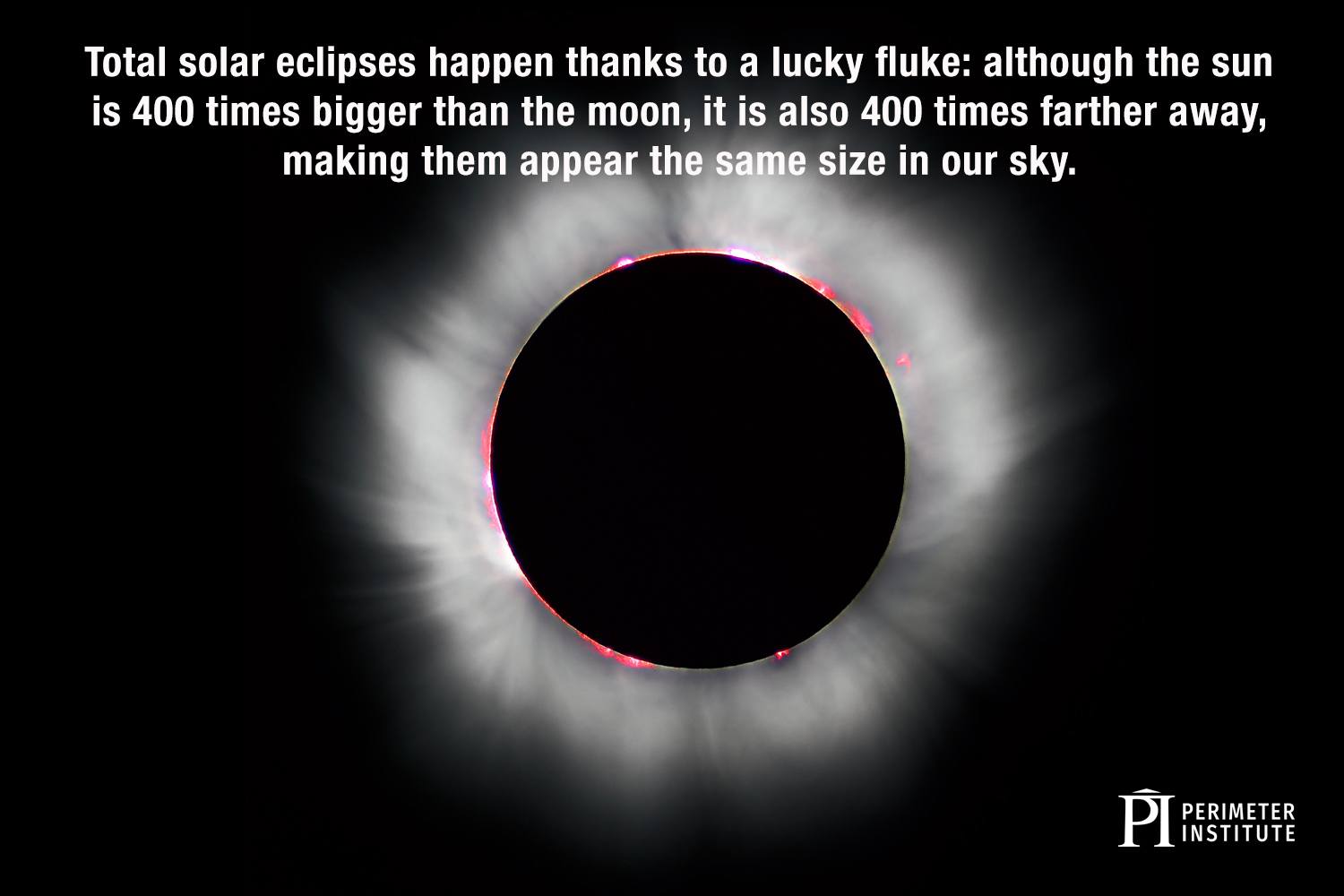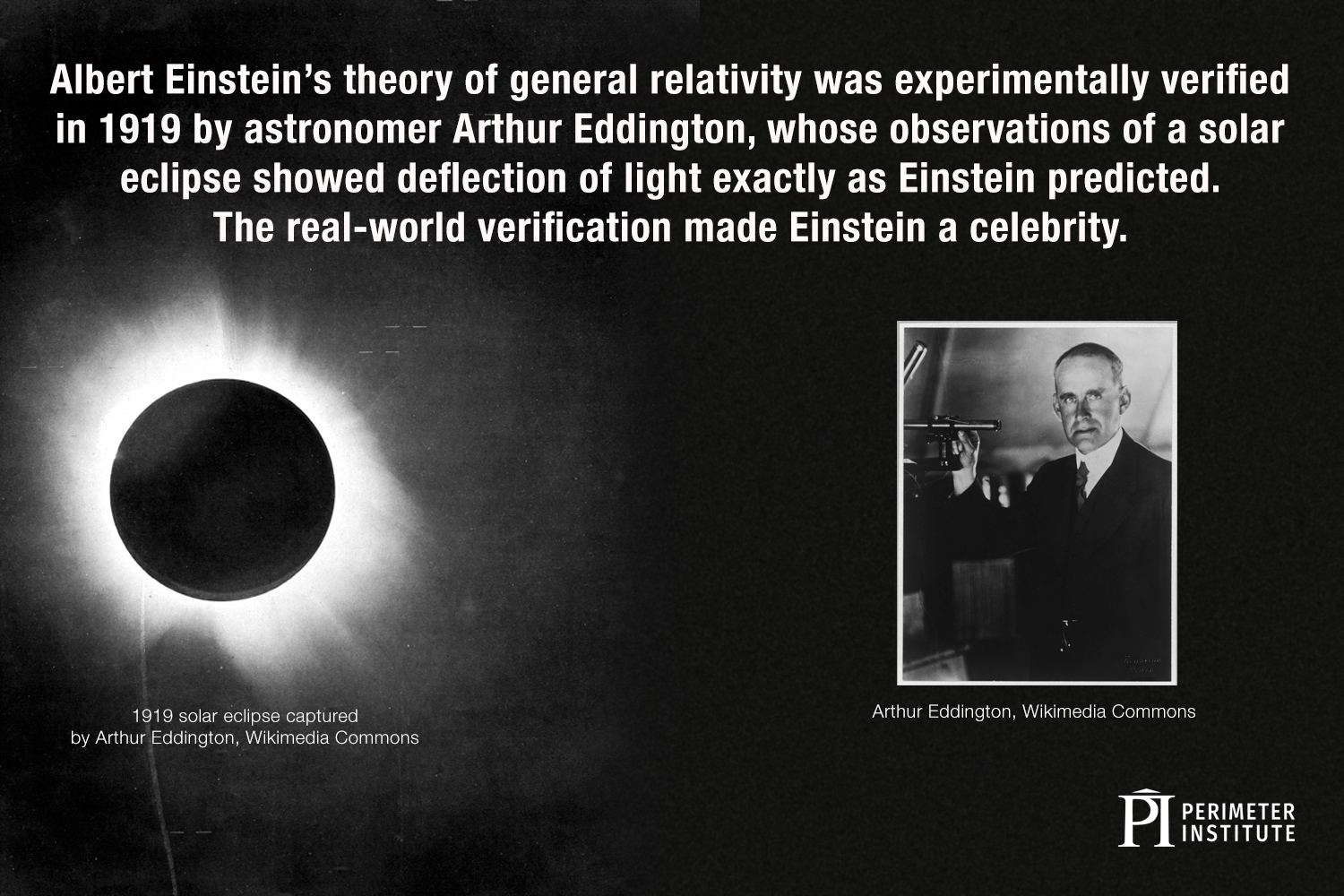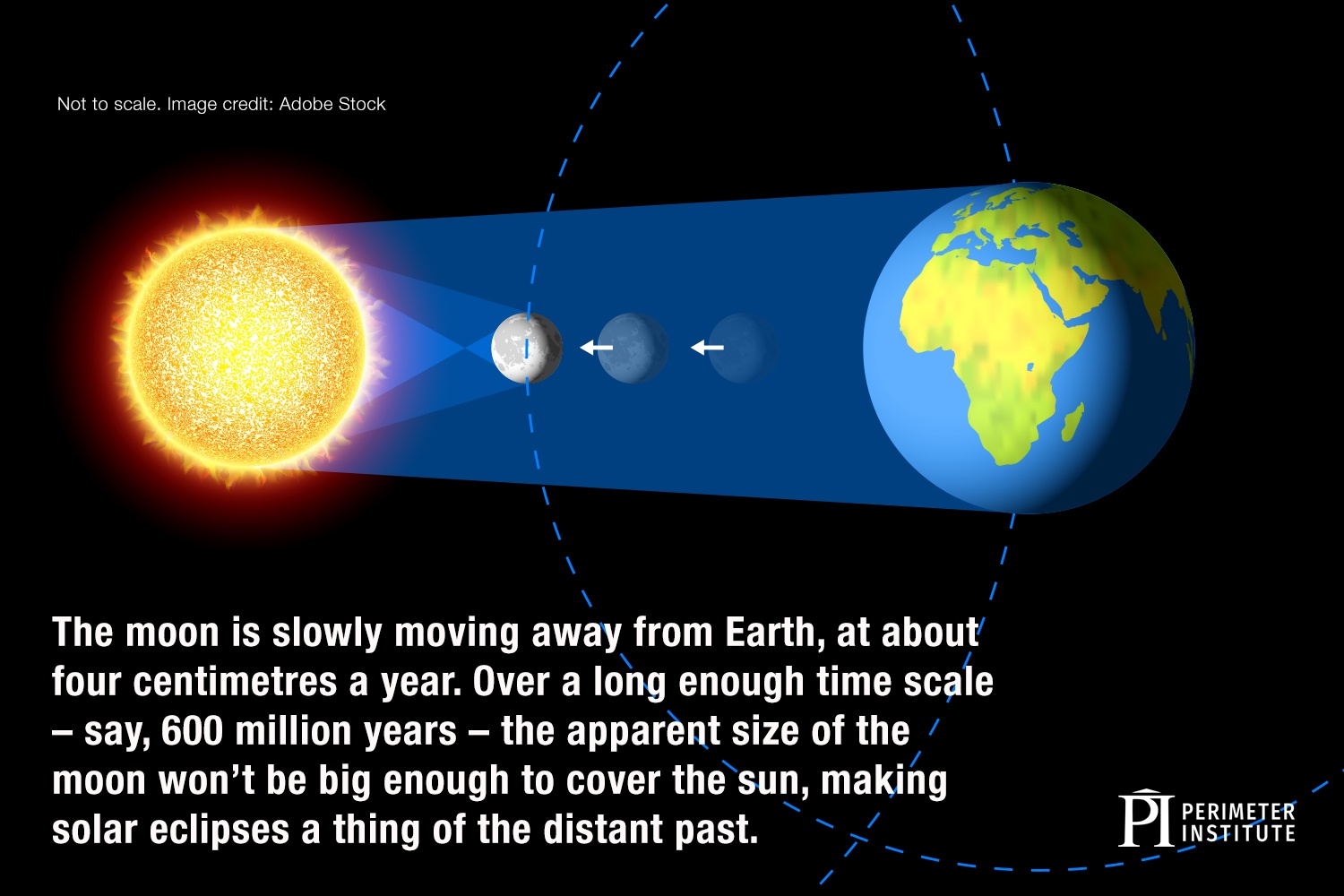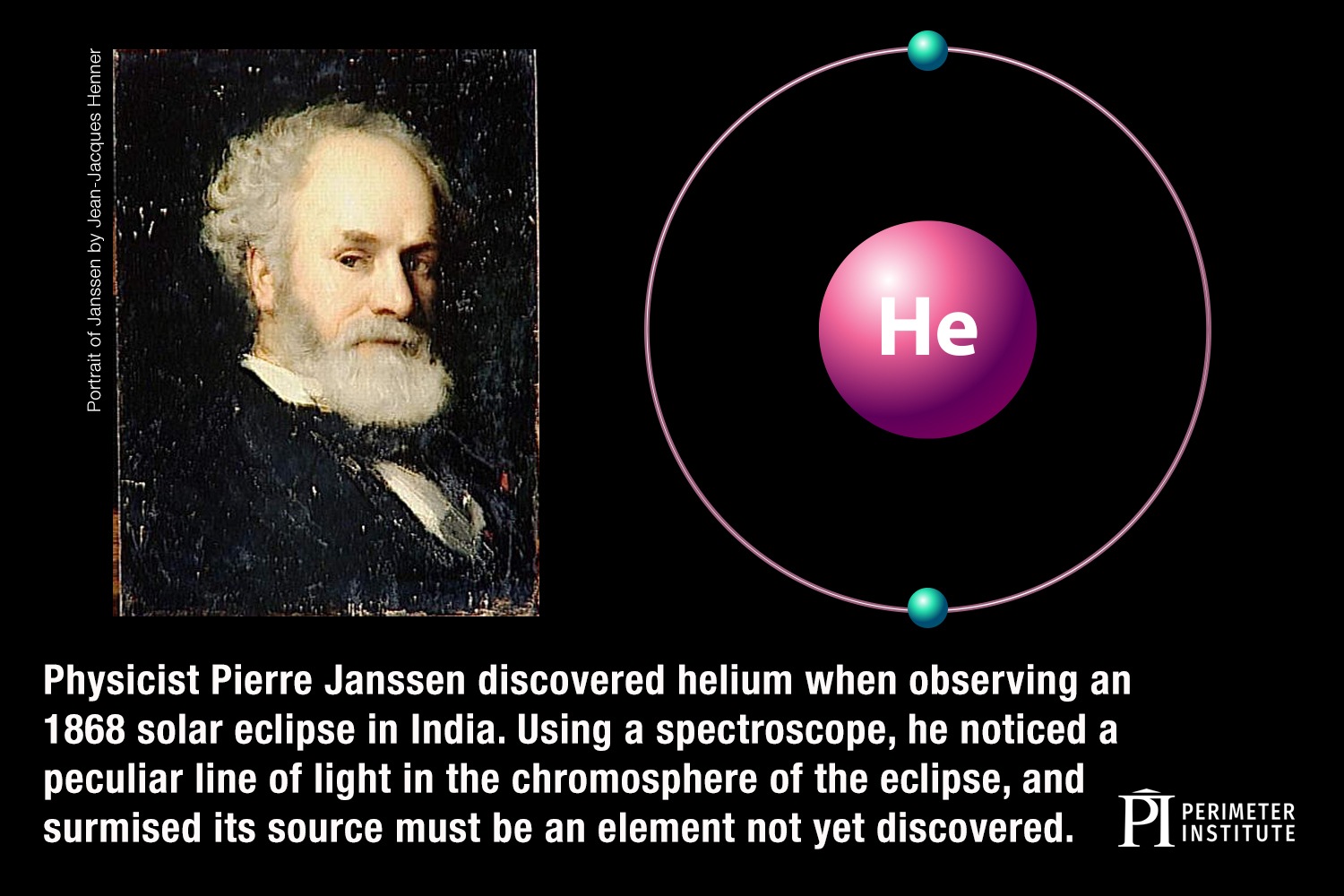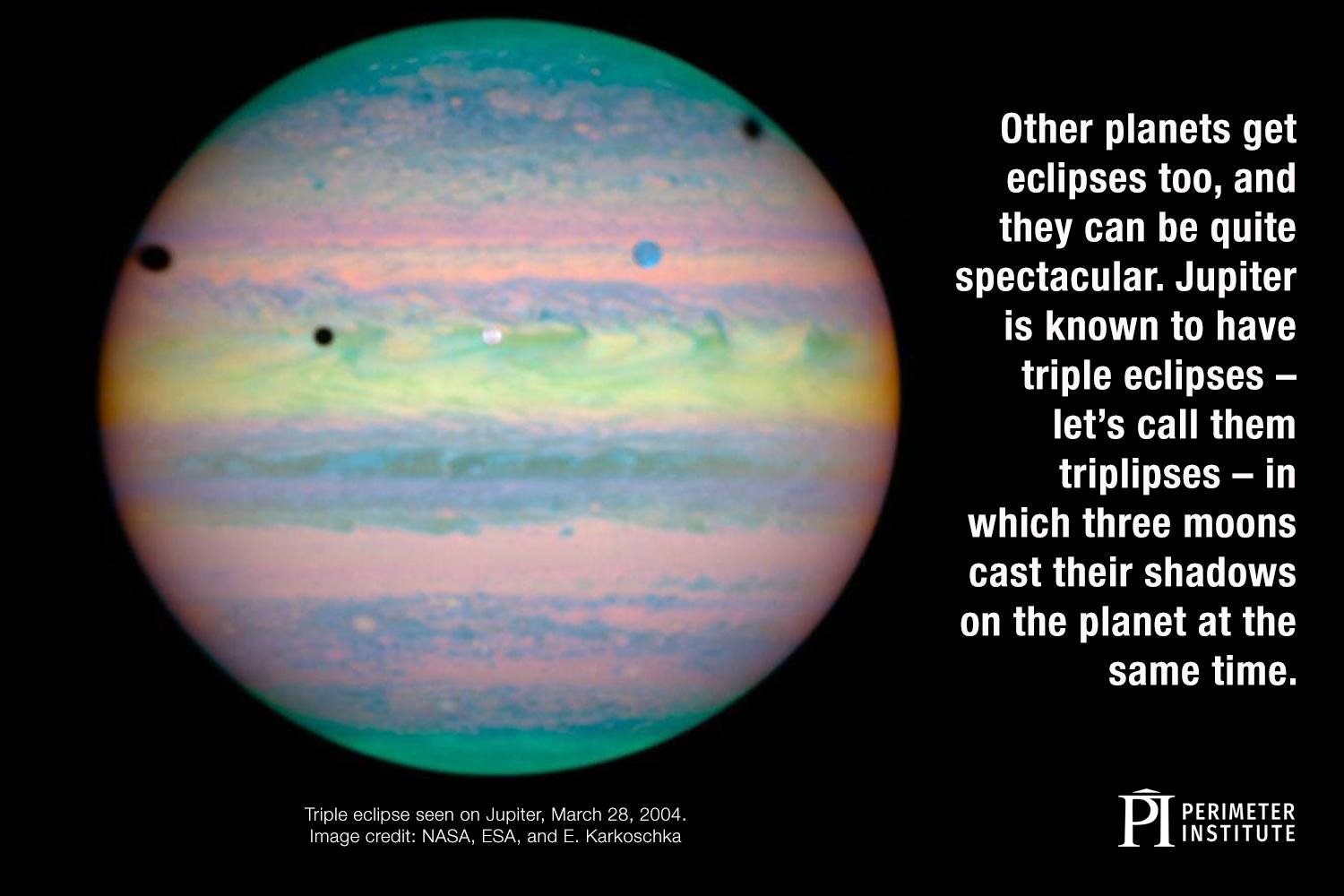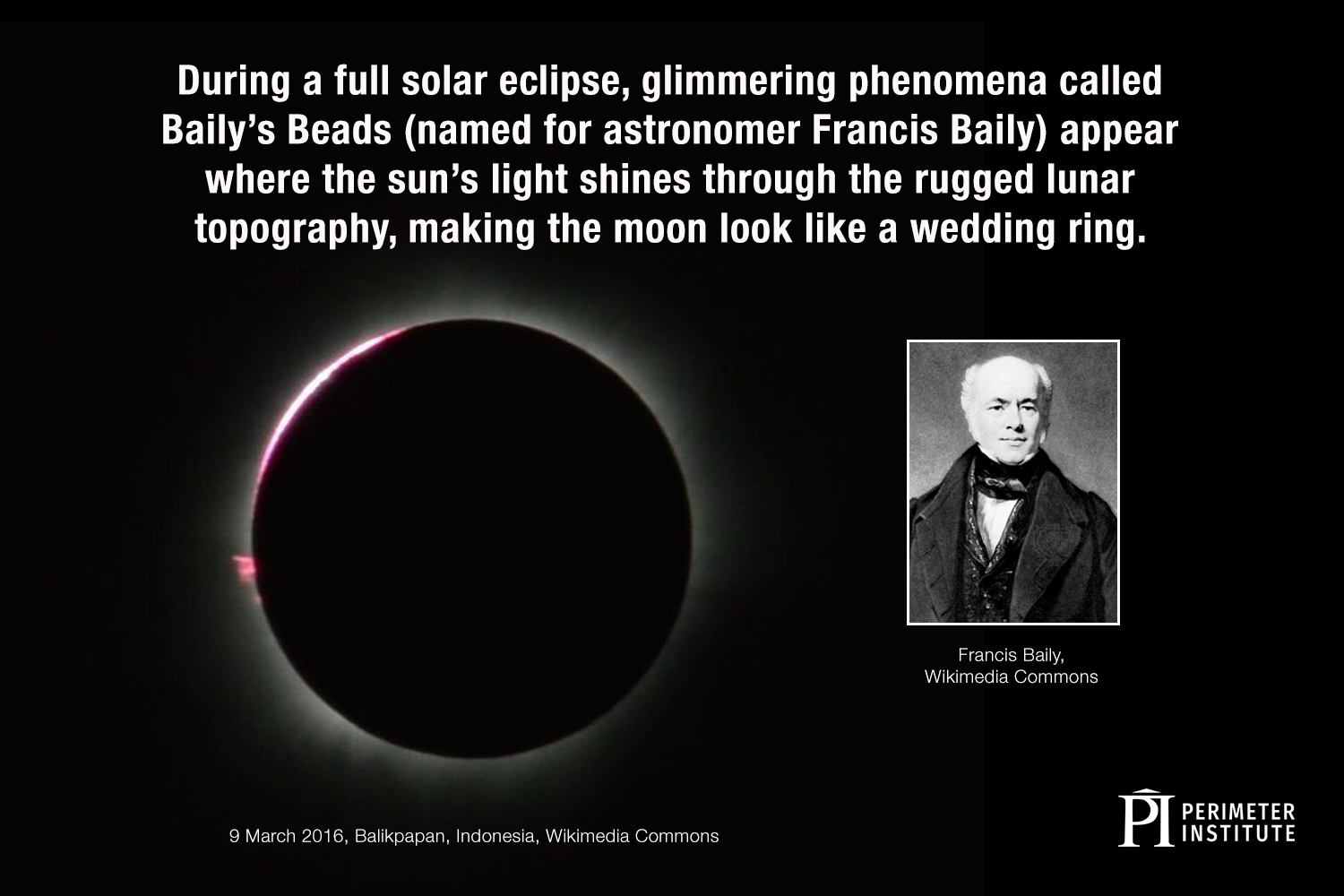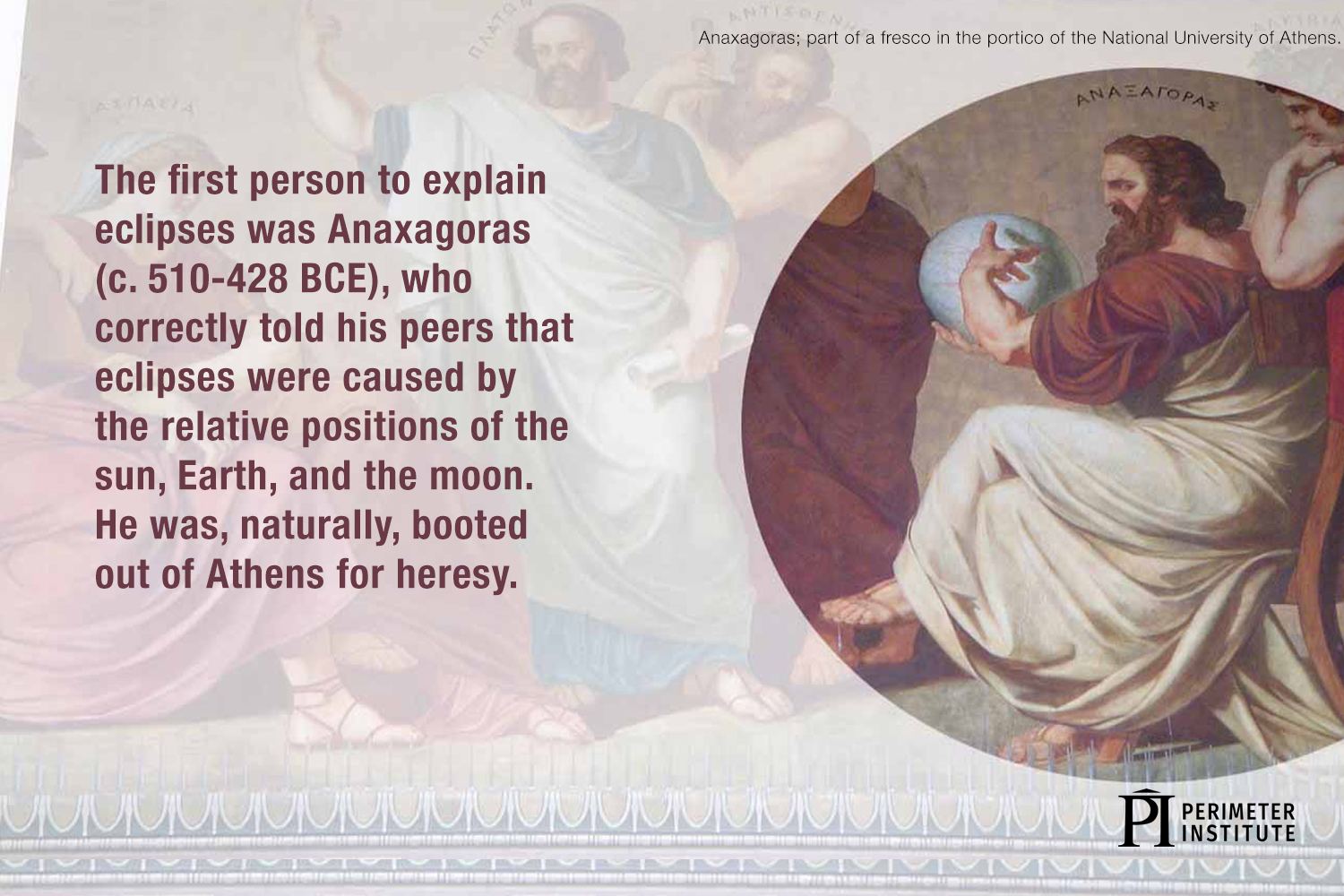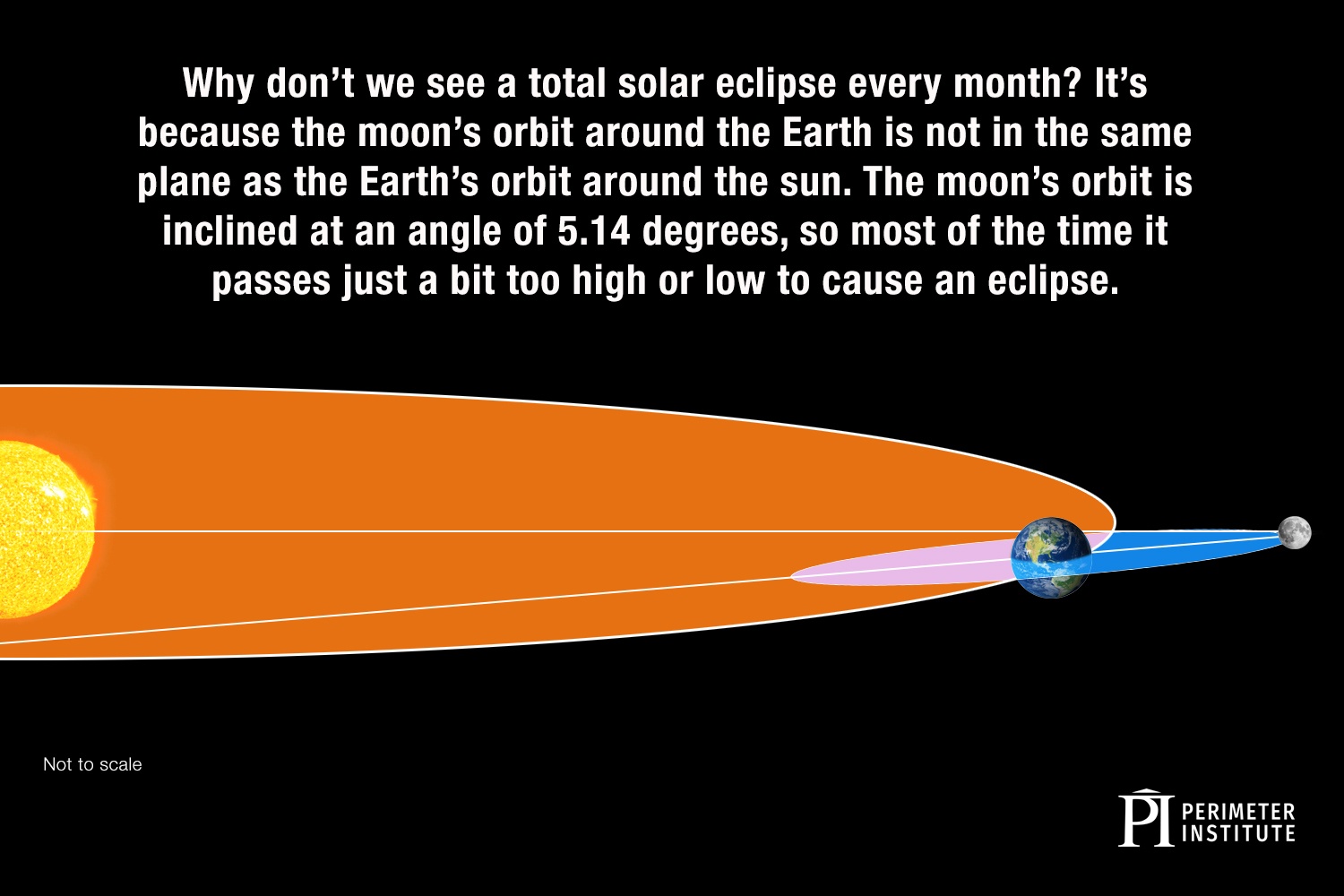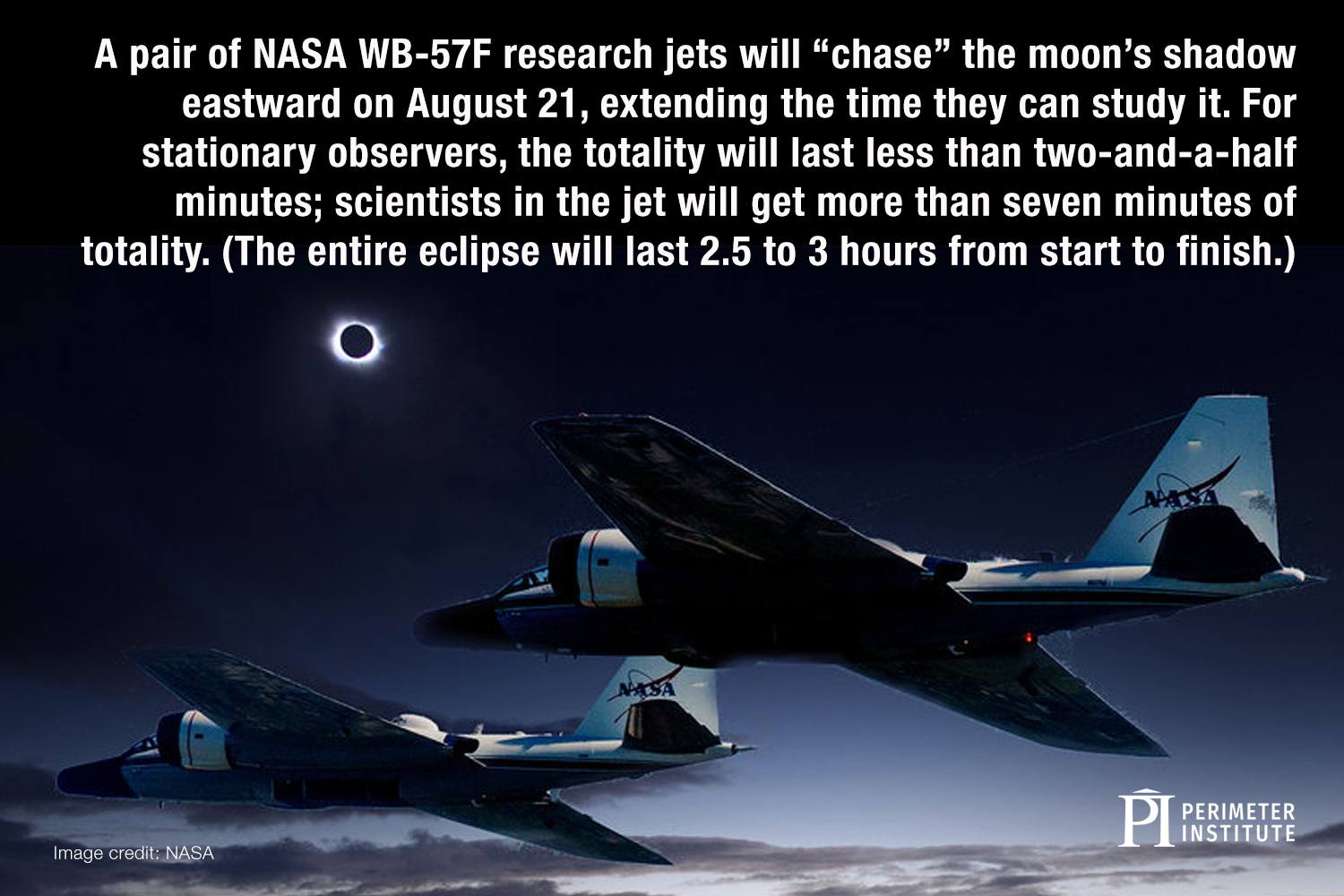Eclipses have fascinated people for millennia. Warring soldiers in Ancient Greece put down their weapons as the moon passed by the sun; present-day heliophysicists capitalize on eclipses to gain insights into the workings of our sun (and, by extension, the billions of other stars in the universe).
On Monday, a swath of the United States roughly 4,200 kilometres long and 113 kilometres wide will be cast into darkness for up to seven minutes as the moon passes directly in front of the sun. Swipe a black marker southeast across a map of the US from Oregon to South Carolina, and you have a pretty accurate depiction of the eclipse’s “path of totality.”
But those of us who aren’t in the direct shadow will still get a partial view of the eclipse. Here are some fun factoids to share when you and your friends are staring -- safely, with special goggles! -- at what is expected to be the most-watched eclipse in history.
Further exploration
About PI
Perimeter Institute is the world’s largest research hub devoted to theoretical physics. The independent Institute was founded in 1999 to foster breakthroughs in the fundamental understanding of our universe, from the smallest particles to the entire cosmos. Research at Perimeter is motivated by the understanding that fundamental science advances human knowledge and catalyzes innovation, and that today’s theoretical physics is tomorrow’s technology. Located in the Region of Waterloo, the not-for-profit Institute is a unique public-private endeavour, including the Governments of Ontario and Canada, that enables cutting-edge research, trains the next generation of scientific pioneers, and shares the power of physics through award-winning educational outreach and public engagement.
You might be interested in




